The battle to legalize cannabis in Spain
The country has some of the world’s most active research teams looking into the drug, but it is still illegal for medicinal and recreational purposes. The value of the global industry is set to grow to around €50 billion – is there a risk that Spanish players could miss out?

Like Bill Clinton, most people have smoked the odd joint. And perhaps like Barack Obama, they’ve even inhaled. After all, cannabis has been around for more than 4,000 years and thrives all over the planet. It was not used for medicinal purposes until well into the 20th century. And in 1961, it was deemed by the United Nations Single Convention on Narcotic Drugs to be as dangerous as heroin.
Around 113 cannabinoids have been identified in a cannabis plant. These themselves are composed of a hundred different substances, most of which have not yet been put under the microscope. Decades of stigmatization has meant the plant has received little research, unlike opioids, which have been heavily studied and whose medicinal use in the US has led to a myriad of addictions and 60,000 deaths a year – more than the number of US casualties in the Vietnam War.
Paradoxically, Spain has some of the world’s most active research teams looking into cannabis, even though it is still illegal for medicinal and recreational purposes. Neither the current government of Socialist Party (PSOE) Prime Minister Pedro Sánchez or any of its predecessors have shown the slightest inclination to regulate the drug. Nor has there ever been significant pressure on politicians to do so, either from within parliament or without. A parliamentary commission for the drug’s legal status supported by the anti-austerity party Podemos and center-right Cuidadanos never got off the ground in Congress. Meanwhile, the medicinal properties of cannabis are being recognized internationally and there is an undeniable change in how it is being perceived.
Consuming cannabis is the most frequently broken law in our country Manuel Guzmán, professor of Biochemistry at the Complutense University of Madrid
While cannabis has still not been rigorously researched, thanks to Israeli chemist Raphael Mechoulam we do know it has two main active properties – THC, which is responsible for the high and CBD, which is responsible for medicinal pain relief. “The balance between the two is key to the consumer’s sense of well-being. This is what avoids a psychotic episode, which is the riskiest aspect of cannabis as there is no danger of death from overdose as there is with morphine,” says Manuel Guzmán, professor of Biochemistry at the Madrid Complutense University and a leading expert on cannabis.
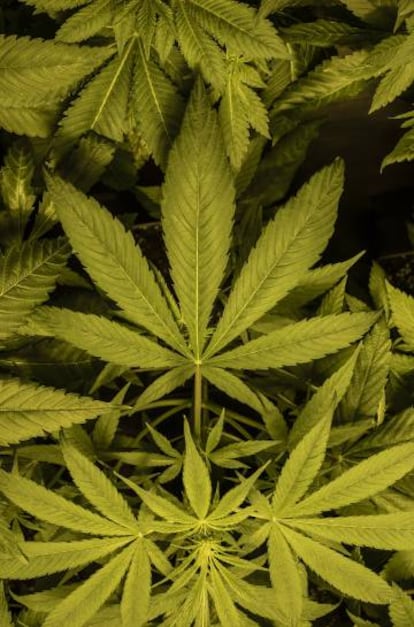
“When you consume it, you need to know what you are taking, what variety, in what quantity and to be aware of where it has come from as well as what side effects it can have. And that all comes with strict regulation – with a standard product that is safe, controlled, well packaged and labeled, and of pharmaceutical quality. [...] Consuming cannabis is the most frequently broken law in our country. The person who gets it on the black market and doesn’t know what they are consuming is taking a big risk. I mean patients – the 120,000 people in Spain with multiple sclerosis, epilepsy, cancer and chronic pain that self dose, not to mention the thousands who would like to do so. They need the best but they are being denied it while prescriptions for opioids, which kill, are being handed out.”
The growing legalization of cannabis (it is legal in Canada and in 33 US states, and is increasingly used for therapeutic purposes in EU countries such as Italy, Portugal and Germany) has given rise to a powerful international industry that is expected to generate €50 billion in 2025 – €5 million of which will be in Spain.
Naturally, this potential has not gone unnoticed by investors and in the past five years cannabis has shed its hippy associations and is now listed on the stock exchange with shares valued above many of Spain’s Ibex 35 companies. Big distribution, food, drink, tobacco, pharmaceutical software, biotechnology and fertilizer corporations – from Coca Cola and Pernod, to Philip Morris are jockeying for position to get a slice of the pie.
Nobody wants to miss out on what is being referred to as “the green rush.” This is not about shifty dealers in local squares selling hash that has been smuggled across borders. It is the advent of a spanking new economic sector, encompassing both medicinal and recreational uses that has 75 million legal consumers – the UN estimates that there are more than 200 million consumers in total – and is starting to draw on the expertise of geneticists, chemists, logistics operators, accountants, lawyers, lobbies and investors. Forget the dope heads, this is now the domain of the suits.
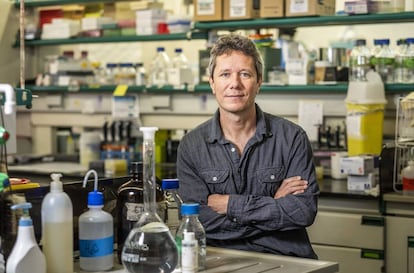
Opportunity abounds. For a start, demand needs to be met and management teams and professionals need to be equipped with skills regarding everything from cultivation to distribution. Investors believe it will be the biggest news in markets since online shopping giant Amazon broke onto the scene.
This turnabout has been largely helped by the legalization of cannabis in Canada in October, 2018. Canada is the first country to legalize both its medicinal and recreational use since Uruguay did so in 2013. The difference is that Canada is an icon of progressive thinking. It also has one of the biggest GDPs in the world and belongs to the G8. Of the 37 million people living there, five million consume cannabis, and the industry is already generating around €6 billion. In comparison to Uruguay, its regulatory model is more focused on business and tax revenue. This model is also being used in the US, where cannabis for medicinal purposes is legal in 33 states with 10 more, including Washington DC, making it legal for recreational purposes too. Today, the cannabis industry employs 160,000 people in the United States.
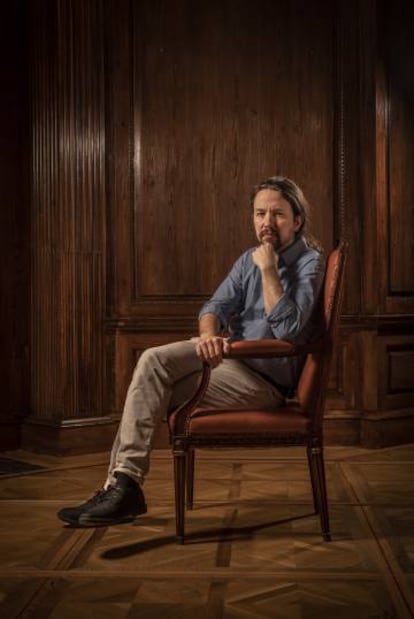
Canada has wasted no time in setting up an industry based on Norway’s approach to oil. “It’s about expertise and patents – there are already 600 in this business,” says Eduardo Muñoz, professor of Immunology and founder of VivaCell, a small biotech company that researches the pharmaceutical potential of cannabis in degenerative diseases, which has since been bought up by Emerald, a Canadian cannabis multinational.
In the space of five years, Canada has accumulated 20 corporations that cover every aspect of the business, ranging from the scientific to packaging the purified extract in capsules or flowers and its subsequent distribution via chemists, clubs or web pages.
And all this in the hands of a clutch of multinationals – the new oligopolies that create new botanical varieties, which are rigorously registered and which have even become subject to industrial espionage. These companies acquire the harvested cannabis from farms in Colombia, Malta, Greece, Syria and Portugal, Andalusia and Murcia, not to mention China, which has plantations the size of 10,000 soccer fields. They are also preparing for the legalization for recreational use in other countries, as the medicinal market accounts for only a third of the whole.
Cannabis is destined to become the business of the century and the tobacco and alcohol industries will help that happen by providing the distribution channels as well as the marketing and publicity expertise, the design tools and the know-how when it comes to effectively lobbying politicians.
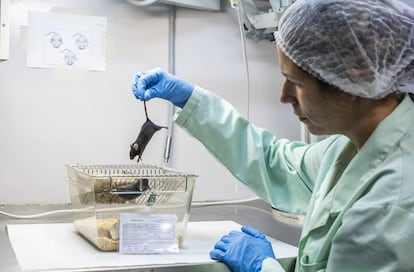
Spain, however, is being left on the sidelines. “We could have Europe’s main plantation here and be the California of the south,” says Pedro Pérez, president of the La Santa cannabis association in Madrid, which has had a number of run-ins with police, particularly after the Supreme Court and the Constitutional Court passed a series of laws between 2015 and 2018 that aimed to stamp out cannabis-consumer associations. “We know how to do it, we have the sun, the tradition and the best seed banks and our associations have put forward the example, with implicit support for responsible regulation, but we are stuck in prohibition. It could be a lost opportunity.”
The most powerful global cannabis company is Canopy, founded in Canada in 2014, which now has a market value of more than €15 billion. Its main shareholder is the US drinks company Constellation. Now Canopy has a monopoly in the EU with a range of agreements and acquisitions in Spain, Germany, Denmark and the Czech Republic. After Canopy comes Tilray with links to the pharmaceutical company Novartis and shares held by the world’s biggest beer company, Anheuser-Busch InBev. Then there is Aurora Cannabis, the leader in marijuana production, with 500 tons harvested a year, followed by Cronos which has shares held by Altria, the owner of Marlboro. In behind come another dozen companies, none valued at less than €1 billion.
The products offered are a far cry from what we associate with the established weed culture. This is a new generation of products manufactured in a laboratory – the result of genetic crop engineering, with plants crossed from all over the world to create resistant, productive and potent hybrids with the best smell and taste. They are then patented. Some are engineered to have THC levels high enough to blow your socks off and others with CBD levels designed for therapeutic punch.
Now, instead of green-fingered hippies working outside the system, we have a new breed of professional – the so-called “breeders.” They are wooed by industrial oligarchs and generously rewarded for their efforts. The breeders produce cannabis according to market demand – be that a cheap, basic product for the general public or a gourmet variety for the connoisseur.
“I am trying to be the [renowned winery] Vega Sicilia of marijuana,” says grower Sergio González, head of the cannabis association Nuestra Señora del Agua in Zaragoza and president of the Responsible Regulation platform, inspired by Madrid lawyer Bernardo Soriano, which lobbies for the legalization of cannabis.
We have to establish a social economic model in Spain that benefits everyone, not just Wall Street Sergio González, 35, weed grower
Sergio González is 35 years old has a Rasputin-style beard. He studied telecommunications and worked at Google and has been cultivating cannabis since the age of 17. Surrounded by dozens of new varieties, he smokes rosin, one of the purest extracts of cannabis that has an 80% concentration of THC, enough to floor an elephant. He produces it himself. “I have a business profile,” he says. “And I am working toward making this professional. When it comes to regulation, we have know-how in Spain that no one else possesses. We come from an area where it is illegal, but we are indispensable [...] because the cannabis corporations need to respond to a demand that is escaping them and they don’t know how to do it.
“The same thing is going to happen here as happened with tech companies and hackers, who had no formal training but had the interest, passion and practical know-how and knew all the tricks,” he adds. “And in the end, [Spanish telecommunication company] Telefónica and other multinationals had to hire their old enemies for a lot of money. The same thing is happening with our seed banks in Barcelona or Málaga, with 20-odd growers such as Positronics Seeds or CBD Crew going from legal limbo to having a turnover of between €10 and €20 million and representing a third of the global seed market. Spain could become the world’s greenhouse.”
Future of cannabis in Spain
“Ninety percent of what is sold in the coffee shops in Holland comes from Granada, Almería, Murcia and Catalonia. And what is sold in Uruguay is developed here. And in Germany, where there is no production capacity, they are waiting for our marijuana. There are vast illegal plantations in Spain, from a dozen hectares in Teruel to 25,000 to 30,000 plants on hillsides and in abandoned warehouses. There are people who have their rent and electricity bills paid in exchange for growing. The business is here but we have to hurry because the problem will be that the pharmaceutical companies get it. We have to establish a social economic model in Spain that benefits everyone, not just Wall Street.”

So how should we regulate cannabis in Spain? Should we make civil rights our reference point or make it purely a business proposition? With an eye on tax income from the industry, a report by David Pere Martínez Oró, coordinator of the Drugs Policy Unit at the Autonomous University of Barcelona, estimates that Spain could make €3.3 billion in taxes and social security payments from the cannabis industry – more than the health budget of the Castilla-La Mancha region.
While Podemos is the only political party in favor of medicinal and recreational regulation, its party leader Pablo Iglesias is not about to be snapped smoking a joint any time soon, though he does admit to having done so as a student. “It didn’t make me feel good,” he says. “I prefer a couple of beers. But I’m not proud of that. People who prefer alcohol have no lessons to teach those who prefer marijuana. Smoking a joint is like going to a bar and having a drink. It’s the same thing.”
Curiously, Iglesias is more focused on the economic arguments in favor of legalization. “I have no doubt that it will be regulated, particularly if we manage to have a joint government with Pedro Sánchez after the elections,” he says, in reference to the snap general election called for April 28. “It’s a cross-party matter that might also include Cuidadanos. Legalization for medicinal purposes is justice. The problem now is whether we do it before other countries. We have to do it now! If we are ready, Spain could receive huge operating and tax revenues. That money would be taken from the drug dealers. And it would allow the police to focus on other things. Spain could become the Canada of Europe – a benchmark. And achieving this could be beneficial for everyone, not just four pharmaceutical millionaires.”

The current government, with Sánchez at the helm, does not seem to have the matter as clear as Iglesias. In fact, legalization has not featured in its plans at all. When asked by Cuidadanos about the prospect of legalization for medicinal purposes in parliament recently, the government answered that the scientific evidence was “insufficient, we are awaiting a conclusion from the World Health Organization (WHO) on the matter.”
Nothing was said about recreational regulation. And concerning medicinal use, the government has stuck to the negative view of the Spanish Medical Agency (AEMPS) – one of the administration’s least-transparent entities – which is against the prescribed therapeutic use of cannabis in the form of flowers or extracts. This is not the same as the half a dozen medicines based on cannabis, only one of which – Sativex – has been approved in Spain. It is used by people with multiple sclerosis and is produced by the UK multinational GW Pharma, costing in the realm of €30,000 a year per patient.
With a staff of 600, AEMPS can be found in an anonymous building on the outskirts of Madrid. The person in charge is pharmacist María Jesús Lamas. “Our job is to determine the benefit/risk ratio of each new medicine that we receive for examination, which means deciding whether the benefits outweigh the side-effects,” she says. “None of the main active ingredients of cannabis have shown in clinical trials to be better than their pharmaceutical counterparts. More trials are needed. Cannabis lacks scientific evidence. And it doesn’t have the necessary quality, safeguards or effectiveness.”
Cannabis lacks scientific evidence. And it doesn’t have the necessary quality, safeguards or effectiveness María Jesús Lamas, pharmacist at the Medicines Agency
When reminded that Germany regulated cannabis for medicinal purposes a year ago, Lamas replies: “They can do what they like. But its effectiveness has not been evaluated objectively, measurably, quantifiably and in a way that can be reproduced. Something that makes you feel better does not necessarily have to be a medicine. [...] There is no scientific evidence that justifies making cannabis a medicine. We are a technical body. The government in power is the one that decides.”
End of story. The meeting is over. But the paradox is that, while the AEMPS frowns on the medicinal use of cannabis, in October 2016, it authorized the cultivation of cannabis to be exported for therapeutic use to a Spanish company with a long history of producing opioids for pharmaceuticals. It is the biggest poppy-growing company in the world, which turns the flower into derived opium products. Its presence in the cannabis sector is significant. It started out in 1934, just importing and transforming opium, but by 1973 it had become an all-encompassing outfit, managing everything from the cultivation to the distribution of the end-product. Today, it produces a third of the world’s morphine. It is called Alcaliber and millionaire Juan Abelló was behind its success.
At 78, Abelló does not give interviews. But the company’s CEO José Antonio de la Puente agrees to speak. De la Puente is a financial lawyer and, sporting an immaculate bespoke suit, his approach is polished and professional.
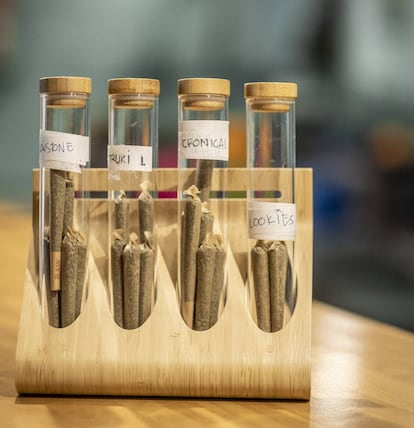
Alcaliber no longer belongs to Abelló. It is now in the hands of the British investment fund GHO Capital, which works out of the Cayman Islands and specializes in pharmaceutical investments. However, the day he sold Alcaliber to GHO Capital, Abelló founded Linneo Health that owns the only license issued by the AEMPS to cultivate and produce cannabis in Spain; a veritable gold mine.
In September, 2017, it had already come to an agreement with the Canadian multinational Canopy to supply it for three years with raw material and an extract of the main active ingredient for pharmaceutical use. “This is a natural evolution for our company; it’s another line of business,” explains De la Puente. “We have always supplied big laboratories. We exported more than 90%. We are the most important opiates company globally and now we are going to achieve the same thing with cannabis. The challenge we face is to turn this plant with its pharmaceutical properties into a standard for the industry, destined for Germany, Canada and the US; and in the future, to put these extracts into spray or capsule form ourselves – developing different varieties and controlling the entire process.”
The mystery is how Linneo Health has managed to get a license to grow cannabis in Spain from the Medical Agency when more than 100 applicants have been turned down in the past two or three years and companies like Phytoplant have placed on a waiting list.
“We are an industrial pharmaceutical company, not an agricultural company, and there are many of those in the sector,” says De la Puente. “We are an industrial company that has plantations. We already have a greenhouse the size of eight soccer pitches. But to be a player in this business, you need extremely good quality. And we have that. It is a very regulated business, very discreet because you are working with an atypical product. We have the experience and we have the teams. And we know how to do it, applying high quality pharmaceutical criteria, rubber stamped by the Good Manufacturing Practices. We are five years ahead of our competitors. We are playing in a different league.”

In March 2018, Linneo Health received 1,500 clones from Canopy. They arrived in discreet containers with regulated light and temperature. The company has had its first harvest and is now in the process of extraction and purification at its plant in Toledo, in central Spain. “At the end of this year, we will be ready to offer our client a valid and standardized product. The best cannabis,” says De la Puente.
Linneo Health’s client is not exactly Canopy but a German offshoot called Spektrum that distributes medicinal cannabis. In the next three years, Linneo Health will learn the business and Germany will provide a market subsidized by the state’s healthcare budget with a predicted one million consumers a year. Germany has established a Cannabis Agency that selects companies to grow for them under strict guidelines. And according to the director, Werner Knöss, the agency will also monitor the growing process as well as the production, harvest, quality control, packaging and distribution. “Only cannabis of pharmaceutical quality can be supplied to the pharmacies,” he says.
Carola Pérez is 40 and has a triangle of scars on her back as a result of 13 operations. She has been living in pain since she was a child and was, at one stage, addicted to morphine. Now she is the president of the Spanish Medicinal Cannabis Observatory and director of the Dosemociones Association for users of marijuana for therapeutic purposes. She grows cannabis and manages to sleep thanks to the THC. She is an icon for medicinal regulation in Spain and is often compared to Pedro Zerolo who campaigned for same-sex marriages. Fighting alongside her is Araceli Manjón-Cabeza, professor of criminal law and director of 21st Century Drugs at the Complutense University of Madrid.
“The pie will be divided between the big corporations,” says Pérez. “And those that have been cultivating illegally, who have created new varieties and who have been jailed on account of it will probably be excluded. The pharmaceutical lobby has a lot of power. And the cannabis lobby has been neither professional nor political. Right now we are focused on Responsible Regulation. And the next government will have to listen. This is not frivolous. It’s not about getting stoned. It’s a question of survival.”
English version by Heather Galloway.


